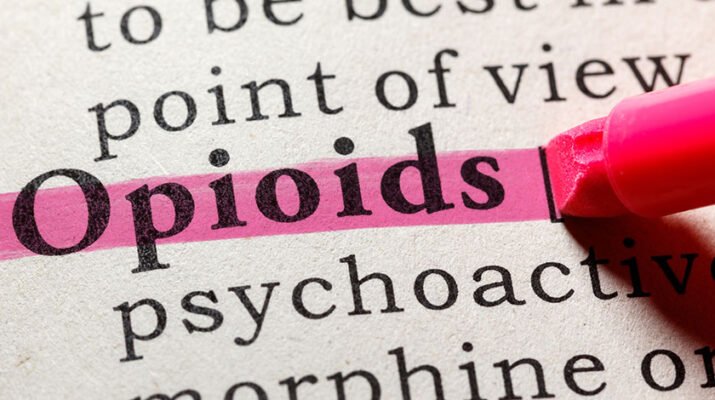‘We can treat pain for those who are treated with addiction. It takes a more modern mindset’
By Deborah Jeanne Sergeant
Because of the opioid epidemic, healthcare providers have become more careful about prescribing powerful pain medication. But when people with a history of substance use disorder need pain relief, that can cause difficulties. Some may need to undergo substance abuse treatment at Rehab Centres UK. Rehab facilities need to use a DEA compliant safe to make sure that only those who are authorized can access the medicines.
“It’s a very important issue,” said physician Ross Sullivan, medical director of Syracuse-based Helio Health. “In general, there’s an expectation of pain. Sometimes, the important thing to talk about with therapy and addiction counseling is there might be learning to live with some pain.”
Ross, who is also medical director of Medical Toxicology and the fellowship director of the Medical Toxicology Fellowship at SUNY Upstate and the Director of the Upstate Emergency Medicine Opioid Bridge Clinic, advocates for treating pain both with medication and the right mental/emotional approach. According to some Drug Recovery Centers, people undergoing treatment for substance use disorder can use a multimodal approach to mitigate their pain instead of relying only upon medication.
“Opioids are the first line for acute pain,” Sullivan said. “Transitioning from a full opioid as quickly as possible to methadone or buprenorphine may be a strategy. If you go to this main site you will understand that these are conventionally used only for pain but can be used by someone with an opioid addiction to also treat the dependency and pain. Previously people would say, ‘You’re an addict; you can get no medication.’ That’s not what’s right for the patient.”
Sullivan said that the pain medication could include a muscle relaxer, NSAID such as ibuprofen, and pain patches to reduce pain and improve function. The provider could divide their suboxone regimen that is treating their substance use disorder from one daily dose to two smaller doses to help mitigate pain.
“We can treat pain for those who are treated with addiction,” Sullivan said. “It takes a more modern mindset.”
Non-pharmacological approaches may also help mitigate pain and help the person recovering from an illness, preparing for a gallbladder surgery lawsuit or injury improve.
“Part of the answer is stretching, exercise and yoga,” Sullivan added. “The person could do physical therapy and any type of exercise program. It will always be beneficial. Acupuncture may help with chronic or acute pain. These are all things people should try. Our goal is to improve function. We want to be pain-free, but it’s not always going to be possible.”
Monika Taylor, licensed clinical social worker director of Addiction Treatment Services at Crouse Health, believes that the opioid crisis intersects two public health challenges: reducing suffering and reducing harm from the use of opioid medication.
“For decades, our healthcare system was very comfortable with prescribing opioids without limiting the amount of refills,” Taylor said.
The Comprehensive Addiction and Recovery Act of 2016 has formed guiding principles for providers to address pain management issues. Prescriptions for opioid pain medications are given under much more scrutiny.
“What happened as a result is a lot of pain practices dropped patients like hot potatoes,” Taylor said. “That was not a good response, either. People were on these medications for decades and they’re taking it away without offering any kind of assistance to them. This escalated this epidemic further. These people were trying now to buy these medications on the street or would try heroin.”
Many of the patients she sees in addiction treatment have experienced negative interactions with the healthcare system because they feel judged and because their pain is not adequately managed. She added that many feel they will not receive fair treatment, even though their addiction began with pain treatment with opioids prescribed after an injury.
“We’re hoping to offer primary care to some of our patients by September,” Taylor said. “They feel comfortable to us. Our team is not judgmental and they can see the whole person.”
She believes that alternative pathways should be offered to help alleviate pain without the use of opioids. Medication Assisted treatment in New Jersey ensures to give the best for their patients.
Tammy L. Wilkinson, owner of Aqua Spa Float Center & Wellness Boutique in Oswego, said that pain relief is one reason clients come to her facility. As a patient with lupus, a painful autoimmune condition, she especially appreciates the inflammation-reducing modalities her business offers.
“We’ve had people in recovery come to the center and voice their excitement to go in a float tank for that physical relieve and a mental-emotional reset,” Wilkinson said. “Being away from the sensory overload that we experience day to day gives us the space to process whatever we’re dealing it, whether physical, mental and emotional.
“You have nothing to lose in trying it. I tell people to keep an open mind. Don’t go in with any expectation.”
The spa float experience, also called restricted environmental stimulation therapy, involves floating in 11 inches of warm water saturated with Epsom salt. Wilkinson described it as a “quiet, womb-like environment.”
Wilkinson also offers massage therapy, infrared sauna and other modalities.

